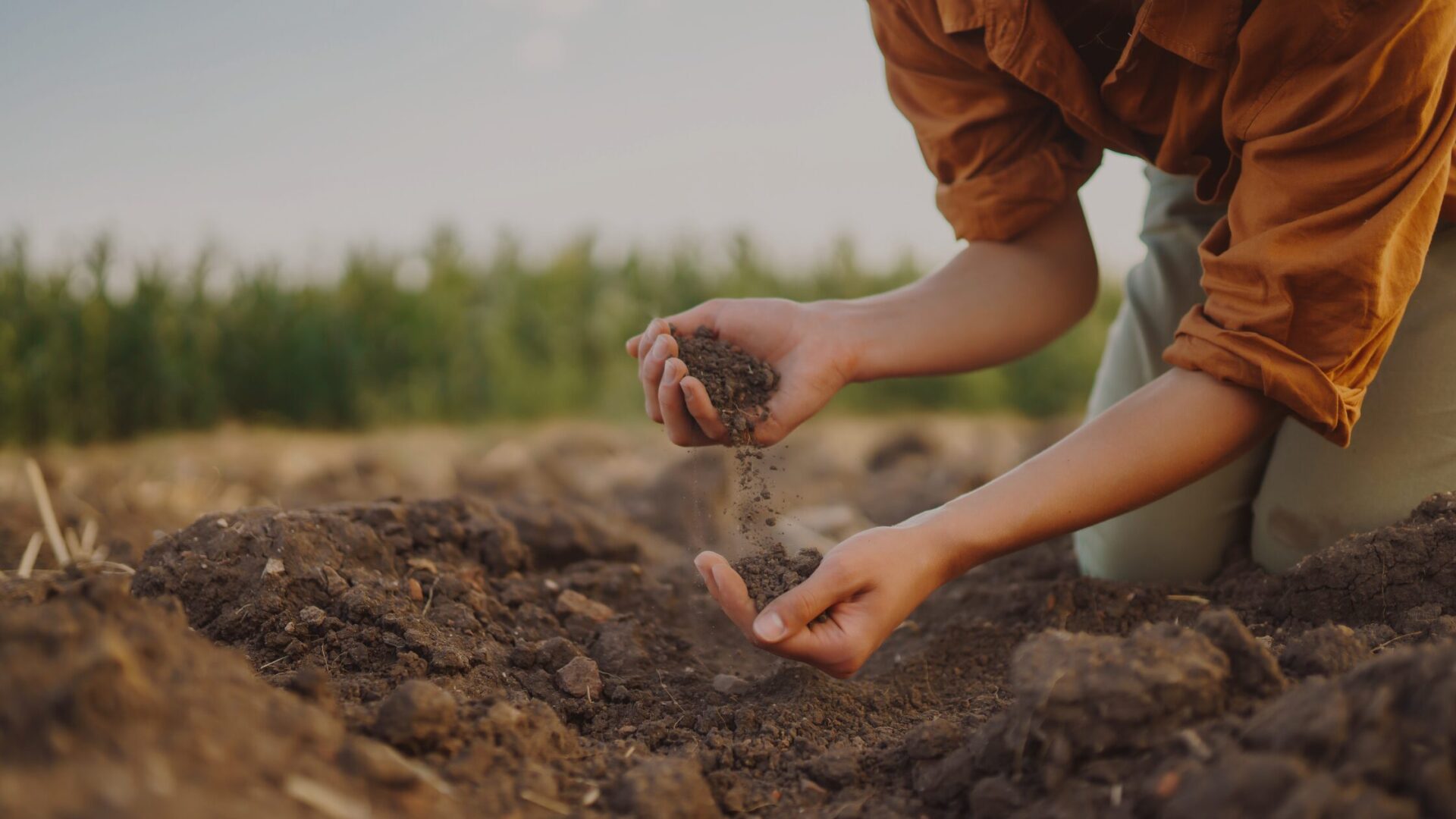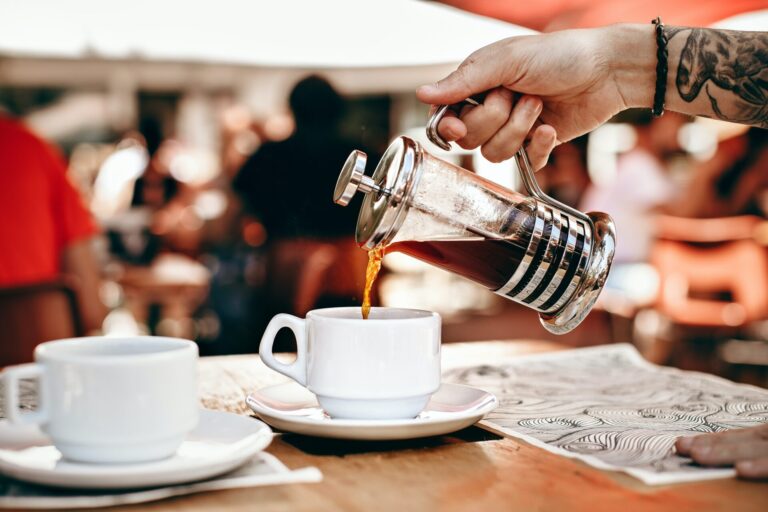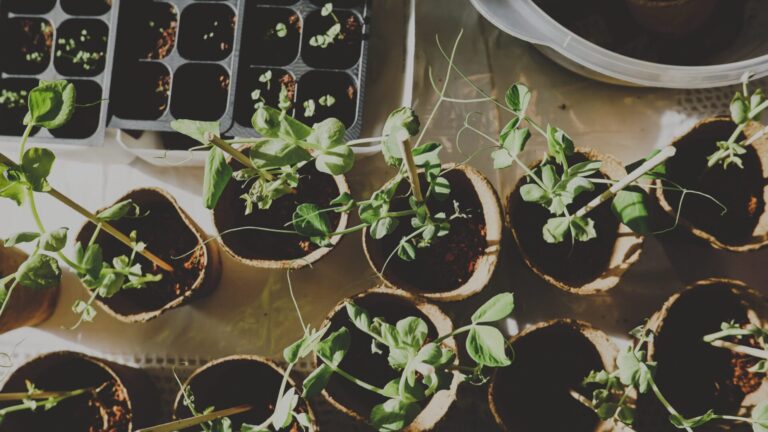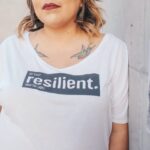With rising prices affecting households everywhere, many people are considering starting their own home gardens. Beyond the practical benefits, gardening offers a wonderful way to connect with nature as a fulfilling hobby.
When growing vegetables and plants at home, most gardeners want to go organic. It’s more sustainable and reduces environmental impact. For those looking to embrace this approach, organic potting soil is an excellent choice.
This article will provide a comprehensive overview of organic potting soil and how to use it effectively.
What is Organic Potting Soil?
How Does it Differ from Regular Potting Soil?
Regular potting soil is designed to support various plant types by blending multiple soil materials with fertilizer components (including chemical fertilizers) in optimal proportions. Most commercial products are ready to use immediately after purchase and offer versatility for growing a wide range of plants.
In contrast, organic potting soil combines base soil materials with exclusively natural organic fertilizers like oil cake and fish meal. It contains no chemical fertilizers whatsoever, using only natural organic materials. This makes it perfect for gardeners who want to practice safe, authentic organic cultivation.
Why Choose Organic Potting Soil?
Interest in organic potting soil is growing among gardeners who want to avoid chemical fertilizers and embrace natural gardening methods. For those pursuing organic farming practices, it provides an ideal growing medium.
Another major advantage of organic potting soil is its ability to activate beneficial soil microorganisms, making it easier to develop the ideal granular soil structure that balances water retention, drainage, and aeration.
Benefits and Drawbacks of Organic Potting Soil
Soil Environment Improvement Benefits
The greatest strength of organic potting soil lies in its excellent water retention and nutrient-holding capacity. This promotes plant growth, helping you cultivate larger, healthier plants more quickly.
The proliferation of beneficial microorganisms in the soil creates natural soil improvement effects. Since no chemical fertilizers are used, it’s environmentally friendly and aligns perfectly with organic gardening principles.
Drawbacks (Pest Issues and Odors)
Organic potting soil does have some considerations. Because organic matter decomposes readily, soil quality tends to deteriorate faster compared to conventional potting soil.
There’s also an increased risk of pest problems, as insects are naturally attracted to organic materials. The high water retention capacity can make the soil slow to dry, and if water management isn’t careful, root rot becomes more likely than with regular soil. This is especially important to watch during winter or in high-humidity environments, where excessive moisture can weaken root systems.
How to Prevent Common Problems
Soil Deterioration Prevention When reusing old soil, add fresh leaf mold or well-composted organic matter to replenish nutrients, and mix in akadama clay or carbonized rice hulls to improve soil structure. Use a sieve to remove old roots, dead leaves, and pests, and eliminate fine soil particles that have turned to powder to ensure proper aeration.
Disease and Pest Management
Sterilize used soil through sun-drying, hot water treatment, or steam treatment in sealed plastic bags to reduce disease and pest risks.
pH Adjustment
If soil becomes too acidic, add appropriate amounts of organic lime, dolomitic lime, or carbonized rice hulls to bring it closer to neutral.
Pest Prevention
Avoid adding kitchen scraps or immature organic matter. Use only well-composted materials and leaf mold. Regular soil sterilization in sunlight, container cleaning, and proper moisture management are essential.
Root Rot Prevention
Mix in drainage-improving materials like akadama clay or perlite to enhance drainage. Adjust watering frequency and amount based on plant condition, avoiding excessively wet conditions.
How to Choose Organic Potting Soil
Selecting by Plant Type (Vegetables vs. Houseplants)
For Vegetables
Vegetable cultivation requires organic potting soil with a pH between 5.5-7.0 (near neutral). Choose products that clearly list pH values on the packaging. While some vegetables like onions and spinach tolerate acidic soil relatively well, others like potatoes and tomatoes prefer less acidic conditions, so consider your specific crops’ preferences.
For nutrients, select products containing organic fertilizers such as oil cake, fish meal, and well-composted organic matter. These ingredients enhance vegetable sweetness and can improve harvest yields. Active microbial activity also creates healthier growing environments.
For healthy root development, ideal soil balances drainage and water retention. Look for products containing coir peat or akadama clay.
For Houseplants
Since houseplants are prone to root rot, prioritize drainage in your selection. Choose soils containing excellent drainage materials like akadama clay, pumice, or perlite. The ideal soil retains adequate moisture while drying reasonably quickly.
For ingredients, products primarily composed of plant-based organic materials like peat moss, leaf mold, and compost work well. Since manufacturers use different raw materials and mixing ratios, check ingredient lists on packaging.
Key Ingredient Considerations
Checking ingredient lists is a crucial pre-purchase step. Organic potting soils use natural materials like akadama clay, leaf mold, and peat moss. Products labeled “chemical fertilizer-free” or “100% organic fertilizer” are ideal for organic gardening.
Product packages list nitrogen (N), phosphorus (P), and potassium (K) content, so choose appropriate NPK ratios based on your plants’ growth stage and needs.
Decomposition level is also important. Products using well-composted materials have lower pest risks and provide more stable results. Avoid products containing immature organic matter.
Quality organic fertilizers and leaf mold promote microbial activity, leading to natural soil improvement and ideal granular soil structure (loose, fluffy soil condition).
Choosing Based on Environment and Growing Location
Container and Balcony Gardening
For portability, choose products using lightweight materials. Select soils made with clean ingredients suitable for entryways and balconies, prioritizing good drainage.
Large Container and Ground Planting
Since plant roots spread deep and wide, choose potting soil with well-balanced water retention and aeration. Consider the growing location’s air circulation and sunlight conditions, and select appropriate container sizes for expected plant growth.
Humidity and Drying Considerations
For dry outdoor environments, choose products containing high-moisture-retention materials like leaf mold or peat moss. For indoor or high-humidity environments, select products with good drainage properties containing akadama clay or perlite to prevent root rot.
6 Organic Potting Soils for Home Gardens
Organic Vegetable Growing Soil 14L (1-3 bag sets)
Key Features:
- Meets Organic JAS standards
- Contains ab-compost
- Produced carefully in Tado-cho, Kuwana City, Mie Prefecture
This organic potting soil’s greatest feature is its complete absence of chemical fertilizer base nutrients. It contains ab-compost that improves soil’s natural fertility, with an exquisite balance of organic-centered materials. All nutritional components are 100% organic-derived or use materials meeting Organic JAS standards, making it ideal for serious organic cultivation.
Organic Potting Soil THEO Geo 5L (1-6 bag sets)
Key Features:
- Contains coconut coir peat, masa soil, black soil, fermented cattle manure compost (odorless), and oil cake
- OMJ-certified material by MAFF-recognized certification body
- Meets Organic JAS standards
Manufactured at Clay Co., Ltd.’s factory in Kawachinagano City, Osaka, this potting soil combines coconut coir peat, masa soil, black soil, fermented cattle manure compost (odorless), and oil cake in ideal proportions. It’s OMJ-certified by a MAFF-recognized certification body, guaranteeing safe, high-quality 100% organic fertilizer composition. Even professional farmers pursuing Organic JAS cultivation trust this authentic organic potting soil.
Premium Organic Vegetable Potting Soil 25L
Key Features:
- Contains neem powder with natural insect-repelling effects and natural minerals
- Lightweight design
This completely chemical-fertilizer-free potting soil contains neem powder with natural insect-repelling properties and natural minerals. Its lightweight design makes handling and daily use very easy, particularly suitable for balcony gardens and limited-space cultivation. Despite its premium quality, it combines ease of use, making it recommended for home gardening beginners.
Flower and Vegetable Organic Potting Soil 20L × 2 bags
Key Features:
- Contains peat moss, bark compost, vermiculite, and hyuga soil
- No initial fertilizer design
- Excellent water retention
This potting soil combines peat moss, bark compost, vermiculite, and hyuga soil in well-balanced proportions, with no initial fertilizer. This allows precise nutritional management through supplemental feeding, enabling appropriate fertilization based on plant growth stages. While offering excellent water retention, it provides high versatility for various plants, suitable for cultivating everything from flowers to vegetables.
Home Garden Neem-Enhanced Organic Potting Soil 16L
Key Features:
- Uses high-quality hard akadama clay
- Contains neem with natural insect-repelling effects
- Includes natural organic fertilizer bat guano
Based on high-quality hard akadama clay from Ibaraki, this distinctive potting soil contains neem with natural insect-repelling properties. It includes bat guano, a natural organic fertilizer that prevents soil oxidation while strengthening crops through the synergistic effects of phosphoric acid and humic acid. This combination can improve flowering and fruiting, making it a strong ally for home gardeners seeking increased harvests.
Ultimate Organic Potting Soil “Golden Soil” 16L
Key Features:
- Contains high-temperature sterilized Miyazaki black soil
- Double benefits of bamboo charcoal and wood charcoal
- User-friendly design for all skill levels
This potting soil contains carefully selected Miyazaki black soil that’s been high-temperature sterilized, with bamboo charcoal and wood charcoal providing dual benefits that maintain consistent soil temperature and protect plants from pests and diseases. The black soil promotes beneficial microbial activity, creating natural soil improvement effects. True to its “ultimate” name, it offers professional-quality results while remaining user-friendly for everyone from beginners to experts, recommended for those seeking stable cultivation results.
Cultivation Tips Using Organic Potting Soil
Mixing and Planting Techniques
Basic Mixing Ratios For most plants, a 7:3 ratio of akadama clay to leaf mold works optimally. Combine leaf mold, compost, peat moss, and vermiculite, adjusting based on your specific plants’ characteristics.
Mixing Timing and Methods Dig soil to 20-30cm depth and evenly distribute leaf mold and compost. Use shovels or hoes to mix thoroughly until uniform. For container cultivation, mix potting soil and leaf mold in a 3:1 ratio, adding compost to improve soil quality.
Advance Preparation Newly mixed potting soil has few microorganisms, so mix 1-2 months before planting, adding appropriate moisture to activate microbial activity.
Soil Preparation Remove large stones and soil clumps with a sieve for uniform soil condition. Ideal moisture allows soil to slowly crumble when squeezed by hand. Add small amounts of water if too dry, or mix in newspaper or dry soil if too wet.
Container Cultivation Notes Since root expansion space is limited, create proper drainage holes in bags or pots, and form filtration layers with fallen leaves to promote healthy root development.
Fertilizing and Soil Reuse Methods
Application Guidelines For organic blended fertilizers, use 20-30g per 10L of potting soil as standard, adjusting based on plant type and growth stage.
Fertilizing Methods Apply solid fertilizer monthly and liquid fertilizer every 10 days as basics. Adjust frequency and amount based on plant growth stages, always watering after fertilizing.
Sun Drying and Sieving Spread used soil on newspaper or tarps for sun drying, removing old roots and plant debris. After complete drying, sieve to remove fine soil particles and ensure aeration.
Soil Regeneration Materials Mix in commercial soil regeneration products (e.g., “Ancient Soil Regenerator – One More Time”) to reactivate soil through microbial action for repeated use. Thoroughly remove root debris and waste before use.
Pest and Disease Prevention Strategies
Mulching Practice Apply bark chips 2-3cm thick to prevent mud splash, weed growth, and soil drying. This also provides disease-causing bacteria and pest prevention benefits.
Improving Air Circulation Prune leaves and branches, maintaining adequate spacing between pots and plants to prevent humidity and stuffiness that encourage pest and disease development.
Beneficial Microorganism Use Apply beneficial bacteria like natto bacteria and lactic acid bacteria to soil to reduce soil-borne diseases and prevent pest damage.
Conclusion
When choosing organic potting soil, start by understanding your plants’ characteristics and selecting products with appropriate pH values and ingredient compositions. Check ingredient lists and choose chemical-fertilizer-free, 100% organic fertilizer products for safe, reliable organic cultivation.
Consider your growing environment (containers, ground planting, indoor, outdoor) when selecting products that balance drainage and water retention appropriately. Choose products using well-composted materials to minimize pest risks and achieve stable cultivation results.
The most important consideration when using organic potting soil is proper water management. Understand its high water retention characteristics and prevent root rot from excess moisture by adjusting watering frequency and amount based on plant condition.
Regular soil maintenance is essential. Use sun sterilization and soil regeneration materials to maintain good growing conditions long-term. Practice clean management and ensure proper air circulation for pest and disease prevention, achieving healthy plant cultivation.
By understanding organic potting soil characteristics and implementing proper usage methods, you can enjoy natural, abundant home gardening without relying on chemical fertilizers.














